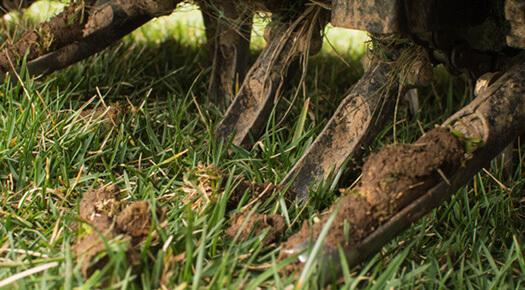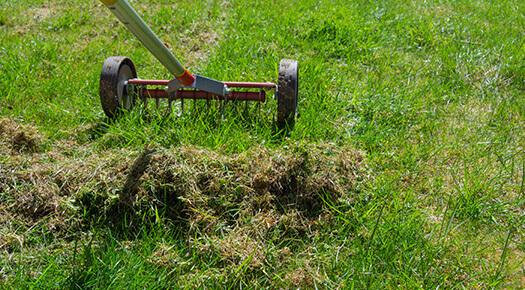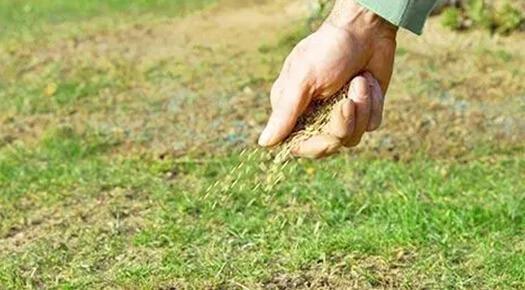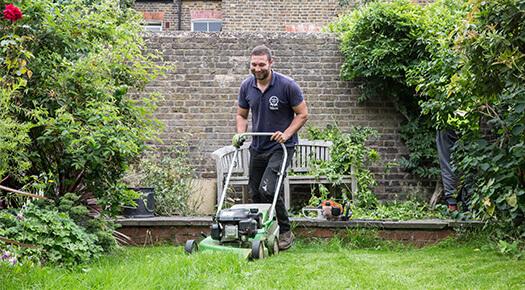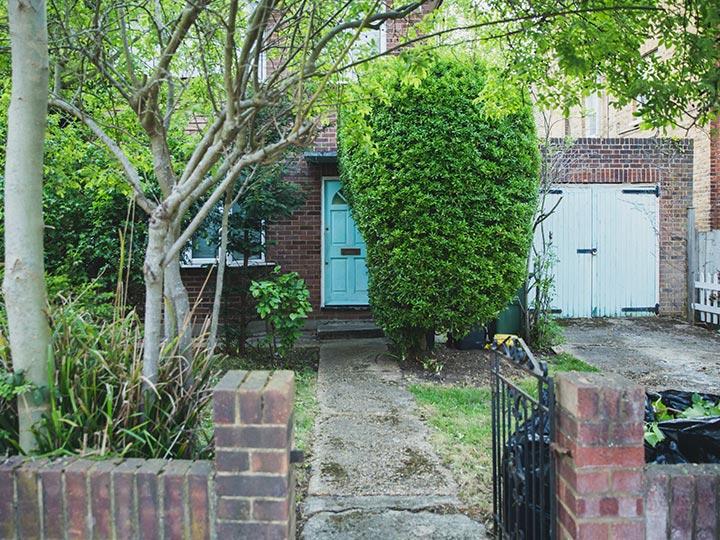When, Why and How to scarify a lawn
- Discover why annual scarification is crucial for a lush, healthy lawn.
- Learn the ideal times to scarify for maximum grass recovery and growth.
- Master the step-by-step process of effective lawn scarification.
- Avoid common pitfalls that can harm your lawn during scarification.
- Unlock pro tips to ensure your lawn thrives after scarification.

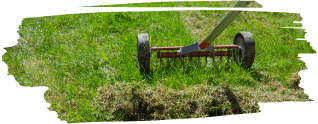
The Importance of Proper Lawn Scarification
Caring for your front and back yards requires a lot of know-how. While we've discussed in-depth many lawn-care topics, we haven't written much on the subject of when to scarify a lawn in the UK.
And given that it's a complicated procedure, more so, when influenced by the UK weather, it's best done by a professional gardener. That's why we decided it would be best to give our input on the topic. After all, we do this all day, every day.
Why should you scarify your lawn?
Scarification should be carried out at least once a year to remove any organic matter such as thatch and moss formed around the base of your lawn. It also helps tidy up any straggly lateral growth.
For those of you out there who don’t know, thatch is your lawn’s upper layer that consists of decaying leaves and other plant materials. If it is not tended to in a timely manner, thatch dries out, thickens and creates a barrier through which moisture and nutrients have a hard time passing. And this leads to your grassroots suffocating.
Thus, scarification needs to be performed in order to remove such thick thatch layers.
When is the best time to scarify a lawn?
Scarifying once or twice a year depends on the condition of your turf and the desired result. Based on the size of your area you can decide whether to do it with hand tools or it is best to use a professional machine. To ensure the best results possible you can aid the process by feeding your lawn afterwards for a strong recovery. During growing season grass can bounce back to an even better state than before. The perfect time for scarifying has specific weather conditions you must look out for – not too cold, too hot, nor too dry. You must time your treatment accordingly as scarifying will leave your soil exposed and vulnerable to the growth of weeds and other unwanted seeds.
Scarifying in spring
Heavy scarifying in Autumn
How to scarify your lawn
Regardless of whether you’re using a handheld scarifier or a powered machine, the method for scarifying is the same. Start off gently and try to do as little damage as possible.
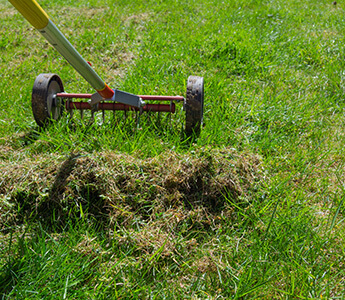
The Second Pass
Depending on the amount of thatch you’ve removed on your first pass, you might want to lower the scarifier setting. This time around, move at a 45-degree angle from the first pass. Since deeper moss and thatch will be looser from the first pass, they will come off easily on your second go.
Using a hand-held toolFor rake and hand scarifier users, go a bit deeper on your second pass. And same as with the powered machine move at a 45-degree angle compared to your first pass.
Remove any leftover debris and your lawn is good to go.
Passing the lawn two times is more than enough when you’re doing the scarifying in spring. However, if you’re doing it in autumn and a lot of thatch and moss has built up, you might have to pass over your lawn with the scarifier up to four times.
Mistakes to avoid when scarifying
Even experienced gardeners can make mistakes when scarifying their lawn. Here are two common errors to avoid, ensuring your scarification efforts yield the best results for your grass.
Scarifying a boggy lawn
The wrong time of year to scarify a lawn
Scarifying during the wrong time of year can make or break all the hard work you’ve put into your beautiful garden. And by doing it offseason your lawn may either not recover at all, or you may be facing more problems. So, if you want your lawn care efforts to yield, it's essential to not only be prepared with the pre-treatment and the procedure itself but also to know when to have it done and which time of the year to avoid.
- October - Often considered the best month to scarify your lawn, it is in fact rather late. Temperatures drop and green growth starts slowing down. The wet weather combined with the cold often creates large patches of bare soil, which barely recover as is.
- Winter scarifying - This must be avoided at all costs! The months from November to February are very cold and you may kill your grass completely if you attempt any sort of raking during that period. The grass stops growing and goes dormant. Exposing your soil to the harsh weather may cause it to suffer from frost heave and it may be invaded by unwanted moss.
- March - Weather conditions are much like October’s, making this a bad time to scarify your lawn. You may be tempted by the higher temperatures and the sun, but the soil is still too cold from the winter months and needs more time. Having said that, March is an excellent month to start planning and preparing for your scarifying. Towards the end of the month consider applying weed killer. Once this is done, you will find yourself in April without a moss problem and ready to rake and de-thatch.
- Summer - the months of June, July and August are always too hot and too dry. Drought slows down grass recovery and any treatment that is too invasive as raking and aerating the lawn will only leave it vulnerable to the heat. Your grass will look poorly, dry beyond saving and the chance of salvaging is very low.
Pro tips for scarifying a lawn
Apart from applying weed killer in late March, there are also other tips and tricks you can follow for successful lawn treatment.
- Weeding or weed killer application - It is best to do it a week prior to your scheduled lawn makeover. This will stop the moss from invading any bare patches later.
- Mowing - About a week before is the best time to have it mowed, too. This will help remove the excess grass and reduce the thatch patches, making it easier to scarify or rake later.
- Watering - You can ideally wait a bit for a rainfall and save yourself the watering. If the weather is not on your side, then schedule your watering session a few days before you are meant to scarify. It is important for the grass to have been well watered, but it is crucial for it not to be wet at the time of scarifying. When the grassroots are wet, they are easy to pull out, so you may end up not raking off the thatch only, but entirely removing the grass.
- Going the extra mile - If you have followed all this great advice but you still feel your lawn is looking too bare for comfort after scarifying, you can topdress and overseed your lawn. This will be partly in favour of weed control, partly to ensure thicker, greener, healthier grass.
- Staying patient - Once all this hard work is done, now it is time to remain calm. It is natural for your lawn to look worse than it was, causing you doubts and worries. If you have followed all the steps to when and how to scarify your lawn the result will be well worth it. With time it will grow back – fuller and healthier than ever and your efforts will be justified.

Have a specific gardening or plant-related question?
If so, click on “Ask now”, submit your question, attach the appropriate images and press send. Your question will be forwarded to one of our Fantastic Gardeners who will get back to you with an answer ASAP.



